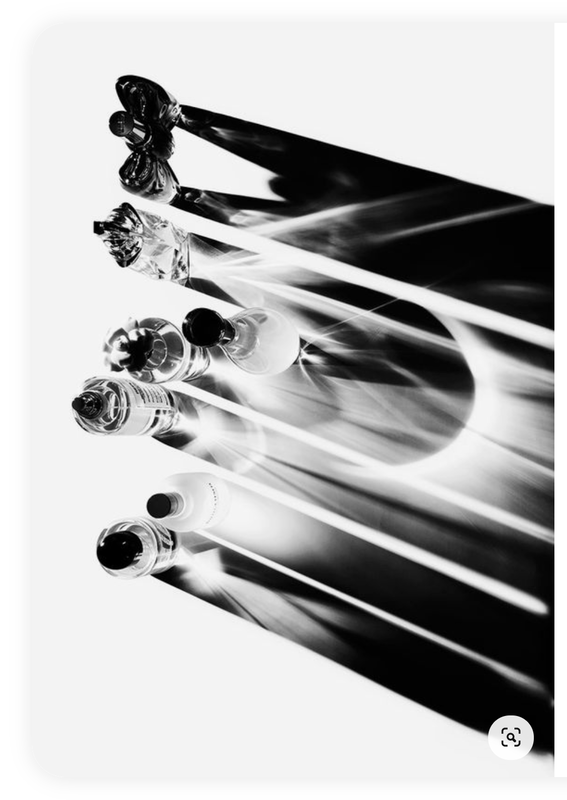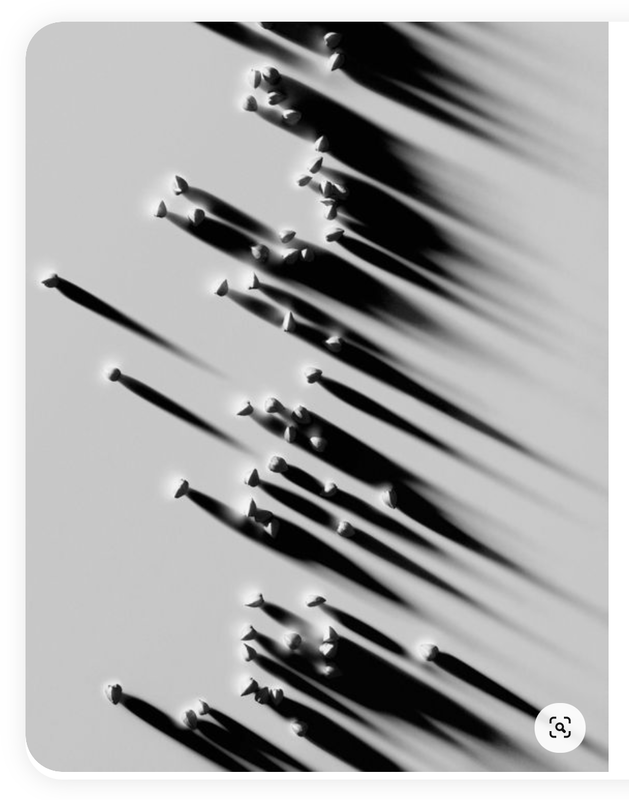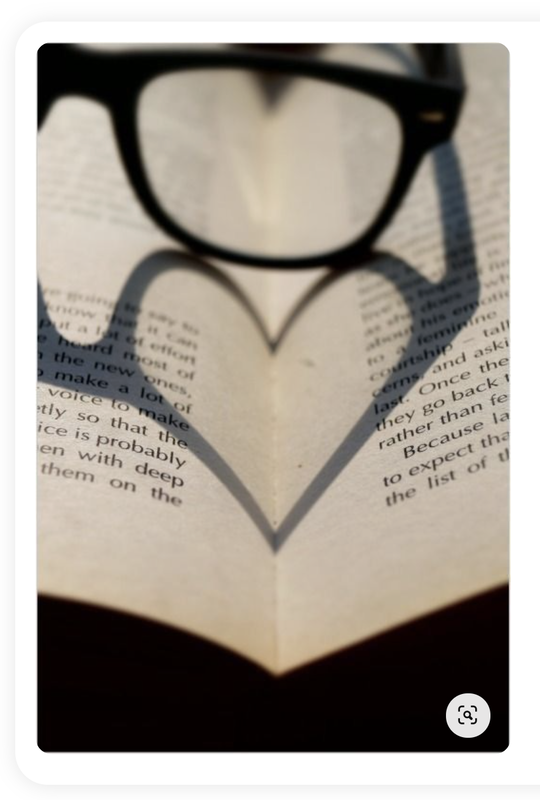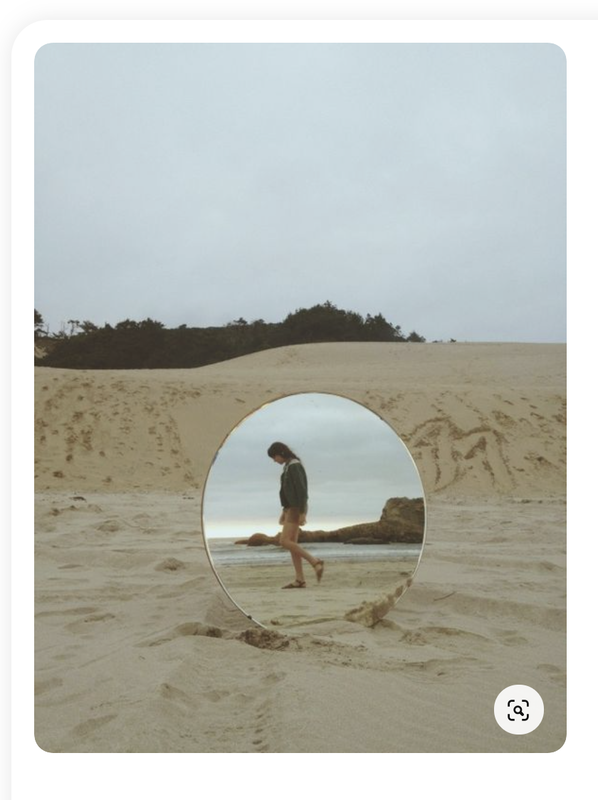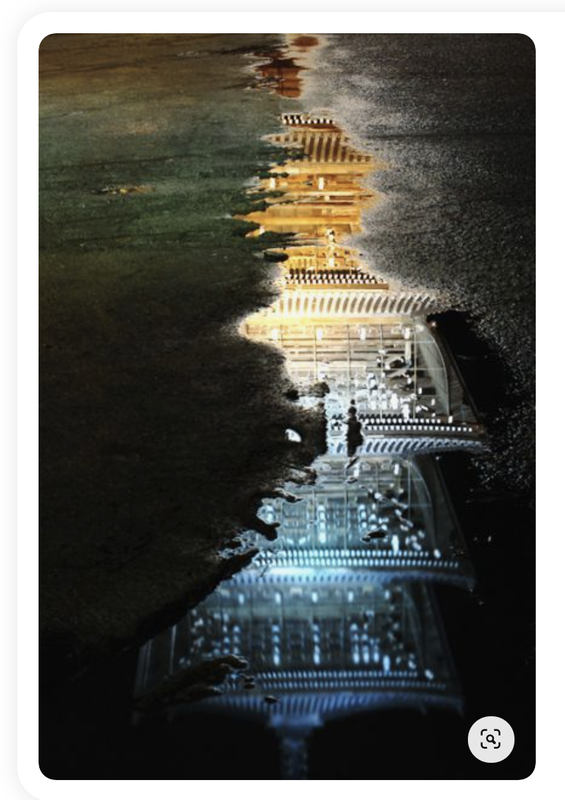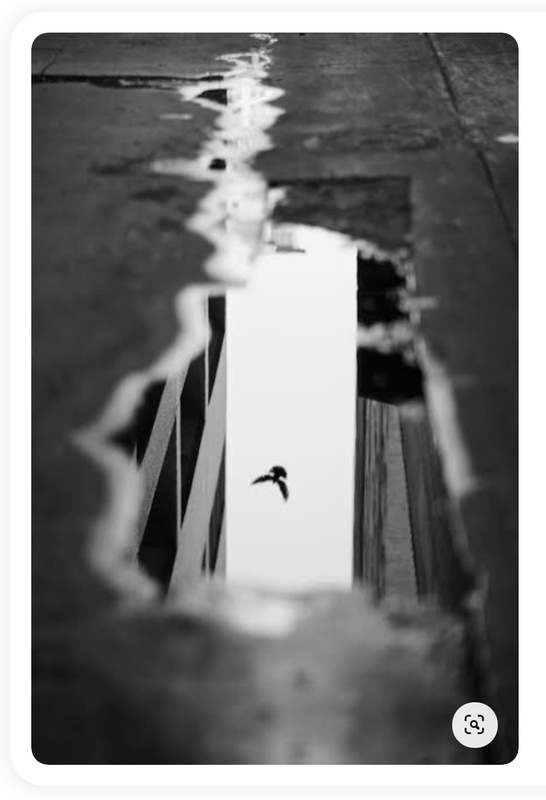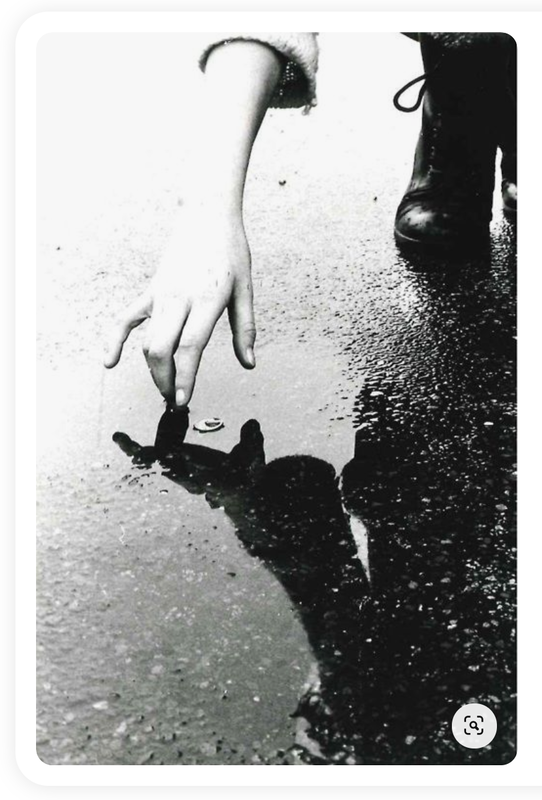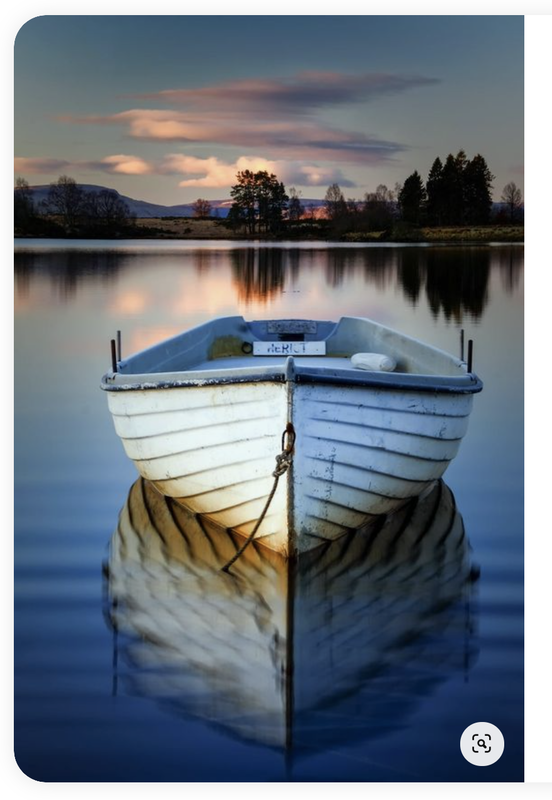Photographing Shadows and Reflections allow you as an artist to show an altered reality or perspective in your artistry.
Photographing Shadows and Reflections allow you as an artist to show an altered reality or perspective in your artistry.
Consider the following suggestions below for shooting "shadows" from the Expert Photography Article.
SHADOW PHOTOGRAPHY
You probably don’t think about them that much when shooting, but shadows can make a scene more dramatic if you know how to use them.
In this article we have a few tricks to show you to help you photograph shadows better.
Why Wait for the Golden HourGolden hour simply refers to the short period when the sun is low on the horizon and casts a “golden” glow. However, the term is quite deceiving because it typically occurs about 20 minutes (not an hour) after sunrise or before sunset.
Despite the time constraint, however, don’t hesitate to shoot at sunrise or sunset if you want dramatic shadow photos. Due to the low position of the sun during this time, it creates long shadows that look more prominent in your image.
The golden hour also provides a perfect opportunity to shoot silhouettes. When the sun is directly behind any object you’re photographing, it naturally creates backlighting.
Consequently, the contrast it produces eliminates the details in your subject and causes it to look black.
Shoot in Harsh SunlightYou don’t always have to wait for the golden hour to end up with cool photos. Sometimes, shooting in harsh sunlight can actually create dramatic results for shadow photography.
In typical situations, we wouldn’t really recommend taking photos when the sun is high in the sky. It often creates undesirable results because it’s usually too bright and creates strong contrasts.
But for shadow photography, those two elements are precisely what you want to achieve incredible results.
The harsh sunlight also works well whenever you’re shooting architecture and other geometrical structures. The sharp shadows the sun creates add dimension to these their framework which makes them look quite dramatic.
So walk around your area when the sun is high up in the sky. See how it interacts with the buildings around you. It wouldn’t take long before you see shadows casting all sorts of patterns that look pleasing to the eyes.
Just remember not to take photos at noontime. Since the sun is directly above you, the shadows it creates typically look unappealing.
Aim for taking pictures before or after 12 PM when the sun is at an angle (10 AM or 3 PM are often ideal times).
Why You Should Experiment With Artificial Light
If you miss the daylight, don’t worry because you can also create interesting shadows at night using artificial lights.
In fact, you have more freedom to play around with them than with sunlight since they’re everywhere and they come in different colours.
You’ll find this surprising, but one of the most fascinating light sources you can try for shadow photography are street lights. They may seem ordinary, but they can be magical in certain situations, especially if it’s foggy or misty outside.
Nevertheless, that doesn’t mean you have to wait for inclement weather to create cool photos with street lights.
Even during an ordinary night, the limited beam of light they produce cast breathtaking shadows on objects below and around them.
Apart from street lights, you also have neon lights. They’re bright, they’re colorful, and the shadows they create always remind you of the sci-fi thrillers you love.
Just walk around downtown, and you’re bound to encounter a few signs worthy to shoot.
Of course, you don’t have to limit yourself with just street lights and neon lights. Just about any type of light source will do. As long as it’s bright enough and shines at a right angle, you can definitely use it for light and shadow photography.
Use Shapes to Create Fun ShadowsWhen photographing shadows, be conscious of how they appear in your image. Are they easily recognizable? If they look distracting, you might as well leave them out of your frame.
The secret is to make sure an object doesn’t cast a shadow that looks like an indistinguishable lump. The best shadows often feature beautiful patterns or solid contours.
Look for objects that have distinctive silhouettes, instead. You can try just about anything from bicycles to trees, as long as they’re easy to identify. Humans also make nice shadows, especially when their arms and legs are spread apart.
Try Black and White to Enhance ShadowsColour can sometimes be distracting, especially when it comes to shadow photography. To make it effortless for your viewers to see the shadows, then just shoot in black and white.
Why? Because it tends to make the contrast between light and dark more prominent. Shades of white, grey, and black are easier for the eyes to interpret than a broad spectrum of colours.
That’s precisely the reason many of the images featured in this article are in monochrome.
The simplest way to produce monochromatic photos is by switching your camera’s shooting mode to black and white. Just remember that in doing so, you’ll end up with JPEG files that you can only edit so much before digital artifacts appear.
If you want some flexibility, try shooting RAW+JPEG. Having a RAW as a backup gives you more options in case you’re not satisfied with your black and white JPEG.
You can use RAW to edit your file without the risk of introducing artifacts.
Another option is to shoot in colour and convert it into black and white in post-processing. All you have to do is open your file on your favourite editing software and desaturate the image.
Alternatively, you can choose a black and white preset (especially if you’re using Adobe Lightroom) for better results.
Consider the following suggestions below for shooting "shadows" from the Expert Photography Article.
SHADOW PHOTOGRAPHY
You probably don’t think about them that much when shooting, but shadows can make a scene more dramatic if you know how to use them.
In this article we have a few tricks to show you to help you photograph shadows better.
Why Wait for the Golden HourGolden hour simply refers to the short period when the sun is low on the horizon and casts a “golden” glow. However, the term is quite deceiving because it typically occurs about 20 minutes (not an hour) after sunrise or before sunset.
Despite the time constraint, however, don’t hesitate to shoot at sunrise or sunset if you want dramatic shadow photos. Due to the low position of the sun during this time, it creates long shadows that look more prominent in your image.
The golden hour also provides a perfect opportunity to shoot silhouettes. When the sun is directly behind any object you’re photographing, it naturally creates backlighting.
Consequently, the contrast it produces eliminates the details in your subject and causes it to look black.
Shoot in Harsh SunlightYou don’t always have to wait for the golden hour to end up with cool photos. Sometimes, shooting in harsh sunlight can actually create dramatic results for shadow photography.
In typical situations, we wouldn’t really recommend taking photos when the sun is high in the sky. It often creates undesirable results because it’s usually too bright and creates strong contrasts.
But for shadow photography, those two elements are precisely what you want to achieve incredible results.
The harsh sunlight also works well whenever you’re shooting architecture and other geometrical structures. The sharp shadows the sun creates add dimension to these their framework which makes them look quite dramatic.
So walk around your area when the sun is high up in the sky. See how it interacts with the buildings around you. It wouldn’t take long before you see shadows casting all sorts of patterns that look pleasing to the eyes.
Just remember not to take photos at noontime. Since the sun is directly above you, the shadows it creates typically look unappealing.
Aim for taking pictures before or after 12 PM when the sun is at an angle (10 AM or 3 PM are often ideal times).
Why You Should Experiment With Artificial Light
If you miss the daylight, don’t worry because you can also create interesting shadows at night using artificial lights.
In fact, you have more freedom to play around with them than with sunlight since they’re everywhere and they come in different colours.
You’ll find this surprising, but one of the most fascinating light sources you can try for shadow photography are street lights. They may seem ordinary, but they can be magical in certain situations, especially if it’s foggy or misty outside.
Nevertheless, that doesn’t mean you have to wait for inclement weather to create cool photos with street lights.
Even during an ordinary night, the limited beam of light they produce cast breathtaking shadows on objects below and around them.
Apart from street lights, you also have neon lights. They’re bright, they’re colorful, and the shadows they create always remind you of the sci-fi thrillers you love.
Just walk around downtown, and you’re bound to encounter a few signs worthy to shoot.
Of course, you don’t have to limit yourself with just street lights and neon lights. Just about any type of light source will do. As long as it’s bright enough and shines at a right angle, you can definitely use it for light and shadow photography.
Use Shapes to Create Fun ShadowsWhen photographing shadows, be conscious of how they appear in your image. Are they easily recognizable? If they look distracting, you might as well leave them out of your frame.
The secret is to make sure an object doesn’t cast a shadow that looks like an indistinguishable lump. The best shadows often feature beautiful patterns or solid contours.
Look for objects that have distinctive silhouettes, instead. You can try just about anything from bicycles to trees, as long as they’re easy to identify. Humans also make nice shadows, especially when their arms and legs are spread apart.
Try Black and White to Enhance ShadowsColour can sometimes be distracting, especially when it comes to shadow photography. To make it effortless for your viewers to see the shadows, then just shoot in black and white.
Why? Because it tends to make the contrast between light and dark more prominent. Shades of white, grey, and black are easier for the eyes to interpret than a broad spectrum of colours.
That’s precisely the reason many of the images featured in this article are in monochrome.
The simplest way to produce monochromatic photos is by switching your camera’s shooting mode to black and white. Just remember that in doing so, you’ll end up with JPEG files that you can only edit so much before digital artifacts appear.
If you want some flexibility, try shooting RAW+JPEG. Having a RAW as a backup gives you more options in case you’re not satisfied with your black and white JPEG.
You can use RAW to edit your file without the risk of introducing artifacts.
Another option is to shoot in colour and convert it into black and white in post-processing. All you have to do is open your file on your favourite editing software and desaturate the image.
Alternatively, you can choose a black and white preset (especially if you’re using Adobe Lightroom) for better results.
REFLECTION PHOTOGRAPHY
Consider the article below from Expert Photography on Shooting an alternative reality with Reflections.
Reflections show up often in the most impressive landscape photos. The iconic ones are beautiful snow-capped mountains with a lake in front acting as a mirror. But reflections are not only great for landscapes. Even in street photography or architecture, you can create stunning images with pools of water after a downpour. It’s not difficult to find inspiration for reflection photography. Look for a river or a lake if you’re doing landscape photography. Wait for the rain to pass and search out puddles if you’re in the city. But finding a body of water is not enough. And that’s where this article comes in. If you want to improve your photography skills with some amazing reflections, keep reading.
Why Angles Can Make or Break Your Reflection PhotosCapturing a good reflection in a photograph is very often a matter of getting the right angle.
Reflections are generated thanks to a source of light. But this source of light can’t show up in your image.
Take this image for example. A landscape photograph of a small alpine lake reflecting the dark tree silhouettes surrounding it.
When composing such a scene, you must be careful to keep the sun out of your image. If it is in your composition, it will be reflected in the lake and ruin your shot.
The sun would considerably reduce the reflection of the main element and the contrast of the scene.
It’ll make your reflection almost completely unreadable.
It’s all a matter of finding that right angle. There’s no one composition fits all though. You have to take your scene into account, adjust your position or your camera’s, and ensure you keep the sun out of your image.
That’ll be the best angle to bounce the rays of light off your chosen mirror surface.
The best time for reflections is usually in the early hours of the day or in the evening. The mist and the coloured clouds of the sunset are a great subject.
Or with an overcast sky, the reflection can help to make an otherwise boring sky interesting.
You can also look for shade. If your mirror is in a shaded area, this will help you emphasise the reflection.
Weather also plays an important role in photographing reflections.
On one hand, reflections can improve a composition when you have a grey sky or one completely clear of clouds. But some situations can complicate your life, and ruin your images.
For example, too much wind will ruin your reflections. So will a downpour.
When doing reflection photography, aim for calm weather, and a completely still body of water. You can’t get reflections on streams and mountain rivers. The water is too impetuous.
Forget Composition Rules for More Interesting ReflectionsPhotographing reflections is quite easy from a technical point of view. Once you’ve got the right weather and settings down, what will really make your image is your composition.
It might be easier to photograph reflections in the city at first. You can find a puddle reflecting a beautiful 200 year old building, and that’s your shot. Fill the frame with the puddle and the building reflected in it. And you’ve got yourself an interesting image.
Don’t let ‘proper’ composition rules constrain your photography choices. This is especially true of reflection photography.
Some of photography’s most common rules are the rule of thirds, and not placing either your subject or the horizon in the centre of the image. When it comes to reflections, however, you’ll want to do exactly what these rules tell you not to.
This is due to the precise and almost ‘geometric’ nature of natural reflections.
Think of a reflection in the calm surface of a lake. It sometimes make sense to balance the composition along a central line.
In fact, I often find myself placing the reflection line right in the middle of the frame to achieve symmetry.
I make sure I have the same amount of sky or ‘air’ both above and below. Simple but always effective.
Get Creative With Reflection PhotographyPhotography of reflections is great for getting creative with your images. You can even use this type of photography to create your own photography style.
Reflections confuse and amaze the observer. Whether it’s a puddle showing an inverted building, or an amazing landscape that boggles the mind. Take advantage of this photography trick to stir curiosity in your viewers.
Use horizontal or vertical reflections. And don’t forget about sideways ones! Especially if you are shooting in an urban environment.
You can use any reflection to make it harder for viewers to understand where up and down are in your image. Get them to wonder which side is the reflection, and which one isn’t! This will keep their eyes glued to your photos for longer.
Try distorting reality by showing an upside down world, Inception-style. Or you can hide your self-portrait in the reflection, or a silhouette. This will make the viewer feel like they’re inside the photograph too.
You don’t have to stick to natural reflections in photography either. Look at buildings, artificial pools, or even sparkling objects. They all provide great opportunities for creative reflections in photography.
Reflections show up often in the most impressive landscape photos. The iconic ones are beautiful snow-capped mountains with a lake in front acting as a mirror. But reflections are not only great for landscapes. Even in street photography or architecture, you can create stunning images with pools of water after a downpour. It’s not difficult to find inspiration for reflection photography. Look for a river or a lake if you’re doing landscape photography. Wait for the rain to pass and search out puddles if you’re in the city. But finding a body of water is not enough. And that’s where this article comes in. If you want to improve your photography skills with some amazing reflections, keep reading.
Why Angles Can Make or Break Your Reflection PhotosCapturing a good reflection in a photograph is very often a matter of getting the right angle.
Reflections are generated thanks to a source of light. But this source of light can’t show up in your image.
Take this image for example. A landscape photograph of a small alpine lake reflecting the dark tree silhouettes surrounding it.
When composing such a scene, you must be careful to keep the sun out of your image. If it is in your composition, it will be reflected in the lake and ruin your shot.
The sun would considerably reduce the reflection of the main element and the contrast of the scene.
It’ll make your reflection almost completely unreadable.
It’s all a matter of finding that right angle. There’s no one composition fits all though. You have to take your scene into account, adjust your position or your camera’s, and ensure you keep the sun out of your image.
That’ll be the best angle to bounce the rays of light off your chosen mirror surface.
The best time for reflections is usually in the early hours of the day or in the evening. The mist and the coloured clouds of the sunset are a great subject.
Or with an overcast sky, the reflection can help to make an otherwise boring sky interesting.
You can also look for shade. If your mirror is in a shaded area, this will help you emphasise the reflection.
Weather also plays an important role in photographing reflections.
On one hand, reflections can improve a composition when you have a grey sky or one completely clear of clouds. But some situations can complicate your life, and ruin your images.
For example, too much wind will ruin your reflections. So will a downpour.
When doing reflection photography, aim for calm weather, and a completely still body of water. You can’t get reflections on streams and mountain rivers. The water is too impetuous.
Forget Composition Rules for More Interesting ReflectionsPhotographing reflections is quite easy from a technical point of view. Once you’ve got the right weather and settings down, what will really make your image is your composition.
It might be easier to photograph reflections in the city at first. You can find a puddle reflecting a beautiful 200 year old building, and that’s your shot. Fill the frame with the puddle and the building reflected in it. And you’ve got yourself an interesting image.
Don’t let ‘proper’ composition rules constrain your photography choices. This is especially true of reflection photography.
Some of photography’s most common rules are the rule of thirds, and not placing either your subject or the horizon in the centre of the image. When it comes to reflections, however, you’ll want to do exactly what these rules tell you not to.
This is due to the precise and almost ‘geometric’ nature of natural reflections.
Think of a reflection in the calm surface of a lake. It sometimes make sense to balance the composition along a central line.
In fact, I often find myself placing the reflection line right in the middle of the frame to achieve symmetry.
I make sure I have the same amount of sky or ‘air’ both above and below. Simple but always effective.
Get Creative With Reflection PhotographyPhotography of reflections is great for getting creative with your images. You can even use this type of photography to create your own photography style.
Reflections confuse and amaze the observer. Whether it’s a puddle showing an inverted building, or an amazing landscape that boggles the mind. Take advantage of this photography trick to stir curiosity in your viewers.
Use horizontal or vertical reflections. And don’t forget about sideways ones! Especially if you are shooting in an urban environment.
You can use any reflection to make it harder for viewers to understand where up and down are in your image. Get them to wonder which side is the reflection, and which one isn’t! This will keep their eyes glued to your photos for longer.
Try distorting reality by showing an upside down world, Inception-style. Or you can hide your self-portrait in the reflection, or a silhouette. This will make the viewer feel like they’re inside the photograph too.
You don’t have to stick to natural reflections in photography either. Look at buildings, artificial pools, or even sparkling objects. They all provide great opportunities for creative reflections in photography.
